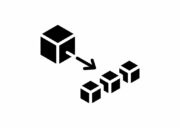
Insurance operating software has fundamentally changed in recent years. To thrive through the rest of the decade and beyond, insurers like Generali must take action now to secure the tech capabilities they need.
The change is upon us already; insurers with more sophisticated IT capabilities have advantages in terms of agility, growth, and cost ratios and can better meet the increased need for digital offerings. And insurers with the most up-to-date analytics capabilities have a five-year revenue CAGR that’s ahead of their competitors by a factor of four.
So what are the trends in insurance software going forward, and how best to implement them?
1. The Increasing Need for Insurtech Solutions
Insurtech (an abbreviation of insurance technology) refers to tech services and products designed to increase the efficiency of the insurance industry. There are three main types of Insurtech companies:
- Enablers – these companies offer specialized services to insurers at each stage of the value chain.
- Distributors – these companies help traditional insurers to sell insurance online.
- Challengers – companies that are active in introducing new business models in the insurance sector.
All of these types of companies have been heavily impacted by the COVID-19 pandemic, which increased the momentum of the already-increasing move to online services. The pandemic also caused huge losses for many insurance companies, ramping up incentives for cost savings and better predictive analysis.
Predictive analysis
Using predictive analytics, insurers gain the ability to use data to determine events, information, or other factors that might affect the outcome of claims. This streamlines a process that traditionally took weeks and even months, helping claims departments mitigate risks. Predictive analysis also allows insurers to use historical data to analyze their claims processes and enhance efficiency by making more informed decisions.
Data is an incredibly important asset to an insurer, and predictive analytics help businesses make the most of their data. From forecasting customer behavior to supporting underwriting processes, predictive analysis has provided valuable insights to insurers for many years. The latest Insurtech software will take this to new levels, with increased computing power and the use of cloud-based solutions.
Data analytics & machine learning

Traditionally, insurers have relied on actuaries hired for their mathematical abilities who crunch complex sets of numbers to understand risk and enable companies to write policies according to their results. However, with the vast amounts of data now available, this sort of intensive work would be totally unfeasible.
Instead, insurance companies such as Generali now increasingly use advanced data analytics tools that incorporate machine learning and artificial intelligence (AI). These tools help insurance companies better understand their customers and their internal workings, as well as the impacts of the broader world around them.
The role of blockchain
The primary benefit of blockchain is building trust between parties who are sharing information. The shared information is encrypted as an electronic list of records or “blocks.” It also cannot be erased, another feature that helps to ensure trust between users.
This benefit is of interest to insurers who wish to incorporate Insurtech. Blockchain can therefore be used to verify coverage between companies and reinsurers, which will help automate claims functions. Administrative costs can also be lowered by automating payments between parties for claims.
One analysis by Gartner suggests that blockchain will generate an estimated $3.1 trillion in new business value by 2030.
Another potential future use of blockchain could be the transmission of digital evidence for underwriting, such as electronic health records (EHR). The combination of the Internet of Things (IoT) and Artificial Intelligence (AI) may, in all likelihood, also lead to the automation of further insurance processes. However, these new technologies still require proper due diligence before the insurance industry can fully utilize them.
2. How Global Insurance Is Going Cloud-Based

Companies like Generali are now using enhanced cloud microservices to boost efficiency and improve customers’ experience interfacing with services online. Additionally, the cloud is helping insurers speed up bringing new products and services to market faster and lowering IT costs.
Although many insurance companies were initially cautious about moving essential business functions and applications to the cloud, most are now making good progress in addressing the infrastructure, organizational, and talent issues that have inhibited transition to the cloud.
Privacy and security concerns and the limitations of legacy systems have prevented insurers from adopting the cloud in the past. Still, now, like many companies across the financial sectors, they are turning to the cloud to obtain significant benefits through speed to market, cost savings, capacity and flexibility.
A survey by Accenture of 50 insurance company executives revealed five key insights:
- Those surveyed envision a digitally transformed industry within the next five years.
- Over the next three years, 11% of insurers’ IT budgets will be earmarked for the cloud.
- 56% of insurers have supported the transition to the cloud by developing and implementing a new IT operating model.
- 90% have a coherent, long-term strategy for technology innovation across their entire organization.
- 68% of insurance companies have performed formal planning and analysis of moving legacy applications to the cloud.
3. Saga Pattern: Why Is It Key in Insurtech?
The Saga design pattern can be used to ensure a transaction’s data consistency and atomicity in a distributed application with more than one microservice. This is vital in insurtech as the accuracy and consistency of data are critical in the use of predictive analysis.
Essentially, the Saga Pattern enables a system to see relevant transactions across an array of microservices and ensure that they are all correctly logged. As a result, it keeps things transparent and provides confidence in the system. This is critical as it ensures that no extra checks have to be made, which would undermine efficiency.
4. Data Security and Privacy Innovations

Over recent years, as businesses migrate more of their solutions online, the number of successful cyber attacks on the insurance sector has grown dramatically. It is estimated that attackers have penetrated this sector to access the personal information of over 100 million people in the US alone.
Although insurance companies are by their very nature masters at actuarial science, the industry has not proven to be consistently better than others at resisting cyber-attacks. However, improvements in data security are now moving at a good pace.
As discussed earlier in this article, insurance companies are now extensively using AI and machine learning, and these can help protect against advanced persistent threats, malware and ransomware. As these systems are used for looking at vast quantities of data, they are ideal for perfecting solutions that can detect any deviation from patterns in data behavior that are prescribed or expected. Additionally, they can respond rapidly to attacks by monitoring data workflows.
With these tools already readily available, insurance companies such as Generali are already in an excellent position to improve their data security and keep ahead of the hackers.
5. Going Beyond COBOL
COBOL has now been around as a programming language for over six decades and underpins most legacy systems in the insurance industry. Unfortunately, it is becoming increasingly hard to maintain as COBOL programmers retire from the workforce, and it no longer matches up well with the latest hardware.
Like many other companies, Generali is moving away from COBOL and toward Java and other more modern programming languages.
At present Generali’s stack is composed by:
- MicroService implemented by SpringBoot Framework or SpringWeb Flux
- Spring Jdbc Template / Spring Data JPA for DB
- Rest Template or Retrofit for HTTP communication
This has been done as part of the overall process of a Mainframe migration from z/OS-BD2 to Unix-Oracle which has produced significant savings for the company. During this project, Generali reduced its license costs on the mainframe and was also able to lower the power necessary to ensure its production remained on the mainframe.
Going beyond COBOL is an integral part of how all insurance companies are assessing their future needs for software development for Insurtech and cloud-based solutions. Moving to more modern and flexible programming languages is part of an overall change in approach in the industry as it reacts to the implementation of new technology and the increasing tendency of business to be conducted online.
Improving Insurtech systems has to be treated with a holistic approach, whether it be adopting the latest methods of predictive analysis, bringing in machine learning, or adapting to the latest challenges in the fields of cyber security.


